Abstract
Cetiedil is a potential antisickling agent whose major effect appears to be at the erythrocyte membrane. To test the hypothesis that cetiedil alters cation transport, we studied the effect of the drug in promoting changes in cell water (Wc), cell sodium (Nac), and cell potassium (Kc). Results are quite different depending on the presence or near absence of intracellular ATP. With fresh cells, 100 microM cetiedil causes little in the net cation or water movements compared with control cells incubated for 2 h. At cetiedil concentrations greater than 100 microM, however, net movements of sodium and potassium increase considerably, and cell swelling results from a net Nac gain that exceeds a net Kc loss. All water movements can be accounted for by cetiedil-induced net cation movements. When 100 microM ouabain is added along with cetiedil, net Nac gain, net Kc loss, and net Wc gain are all increased compared with results obtained with cetiedil alone. External calcium inhibits cetiedil-induced changes in cation transport. With cells depleted of their ATP, cetiedil inhibits the typical potassium loss that occurs in the presence of external calcium; net sodium uptake changes little under these conditions, regardless of the presence or absence of external calcium. Our findings indicate a complex mode of action for cetiedil on the erythrocyte membrane, and support the hypothesis that the erythrocyte membrane, and support the hypothesis that the antisickling effect of the drug observed in vitro results from dilution of intracellular hemoglobin secondary to net salt and water gain.
Full text
PDF
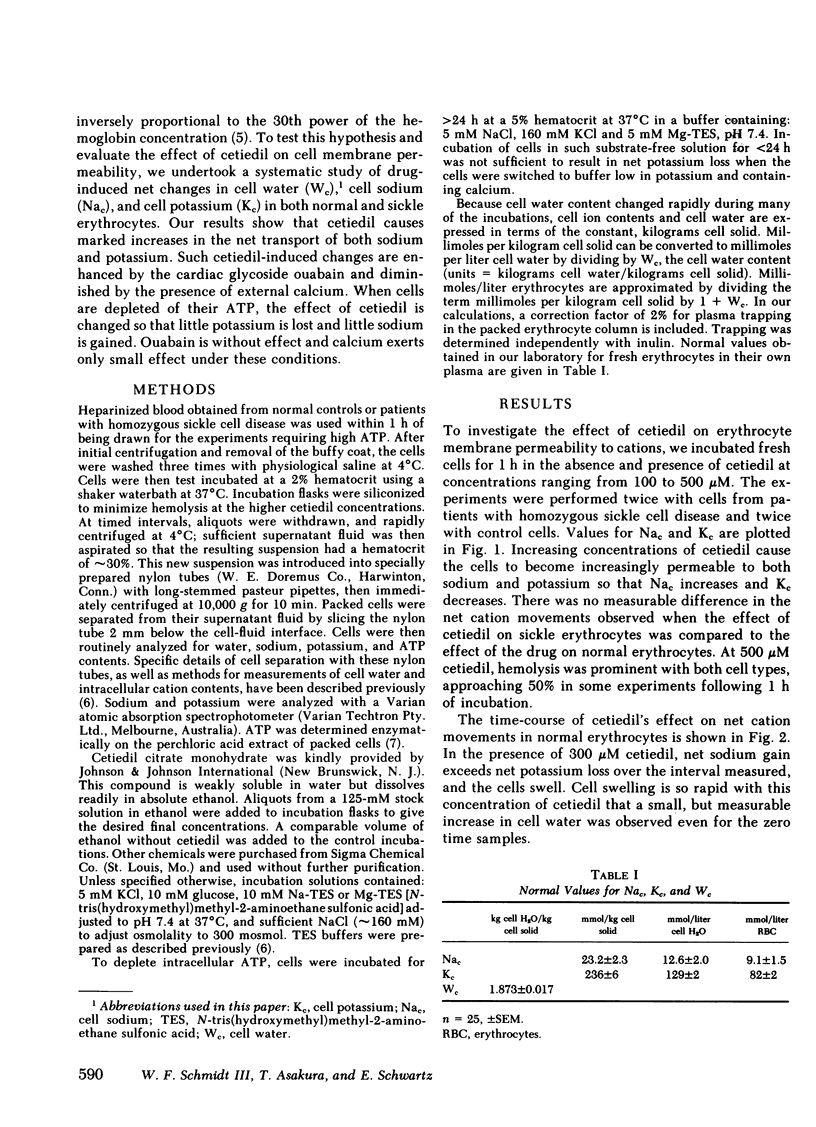
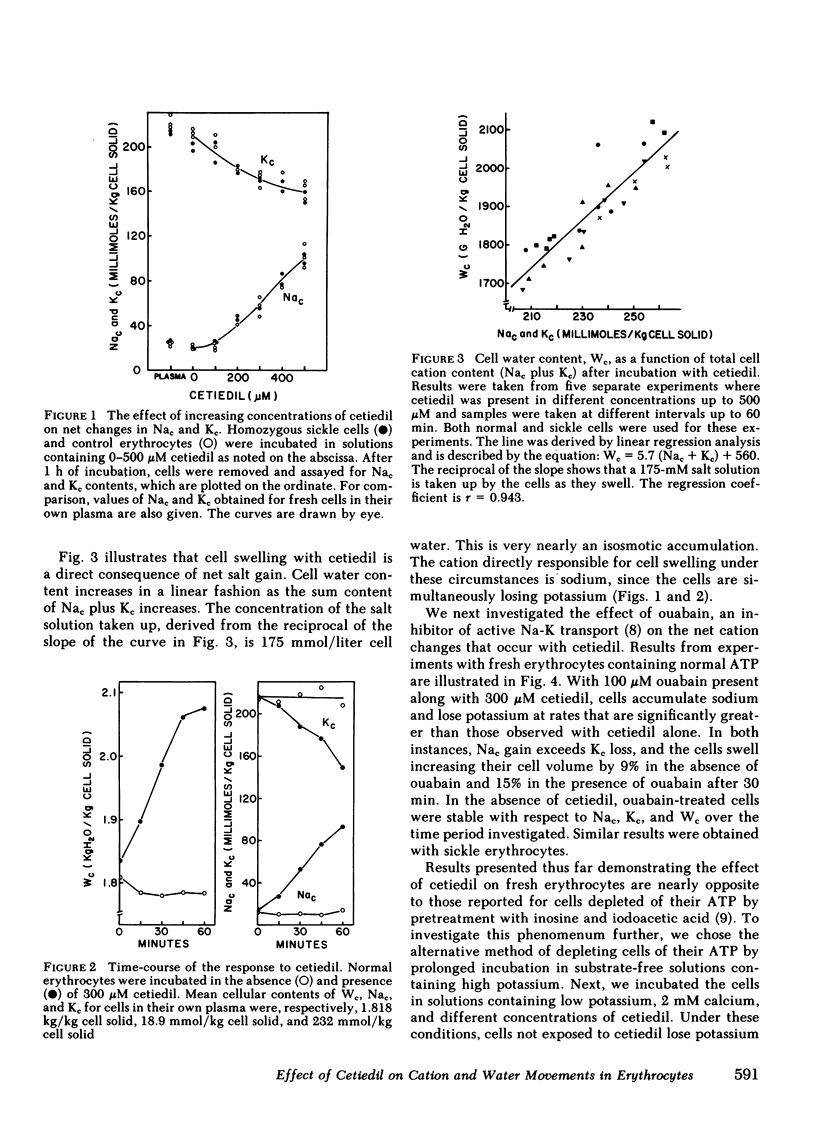
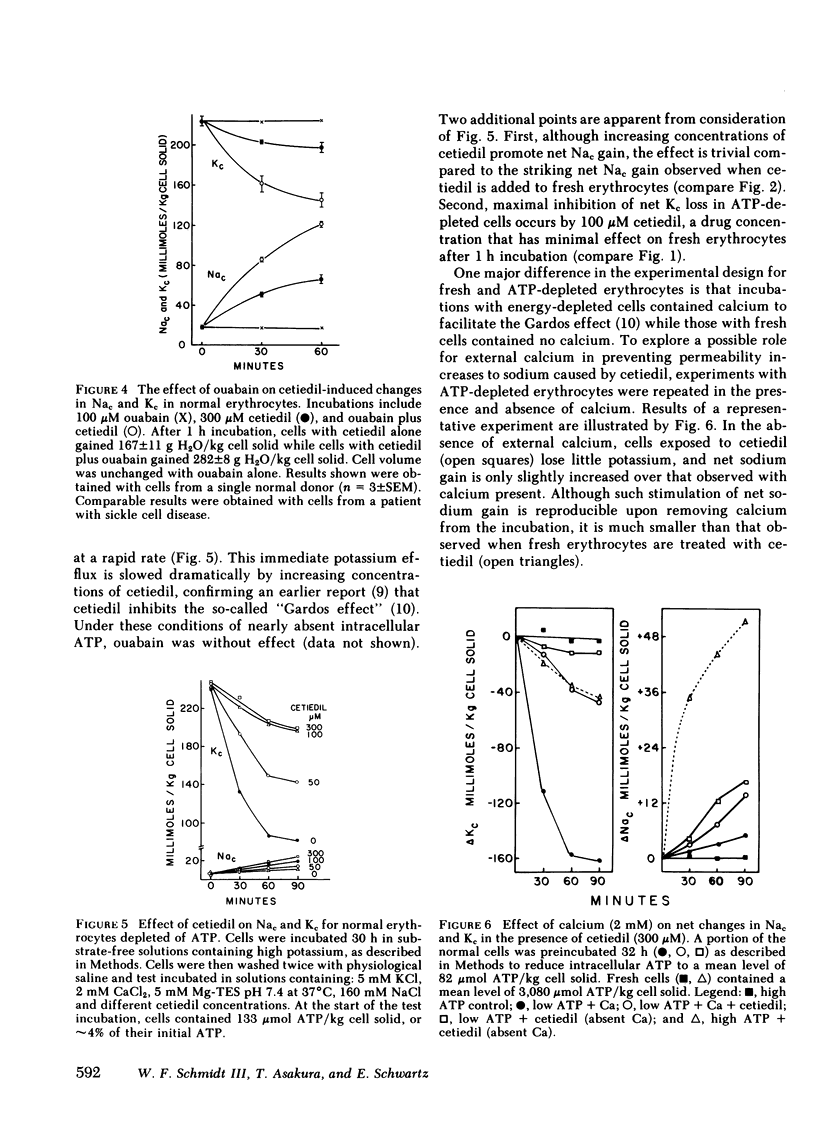
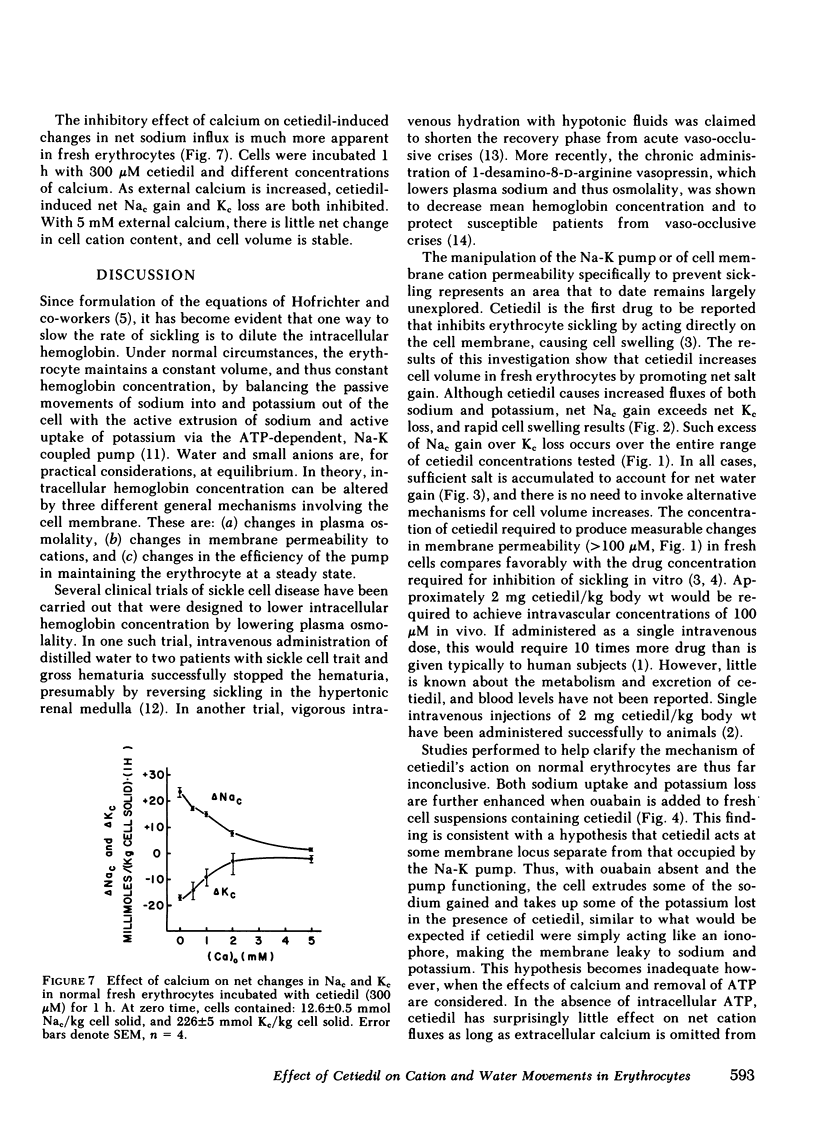
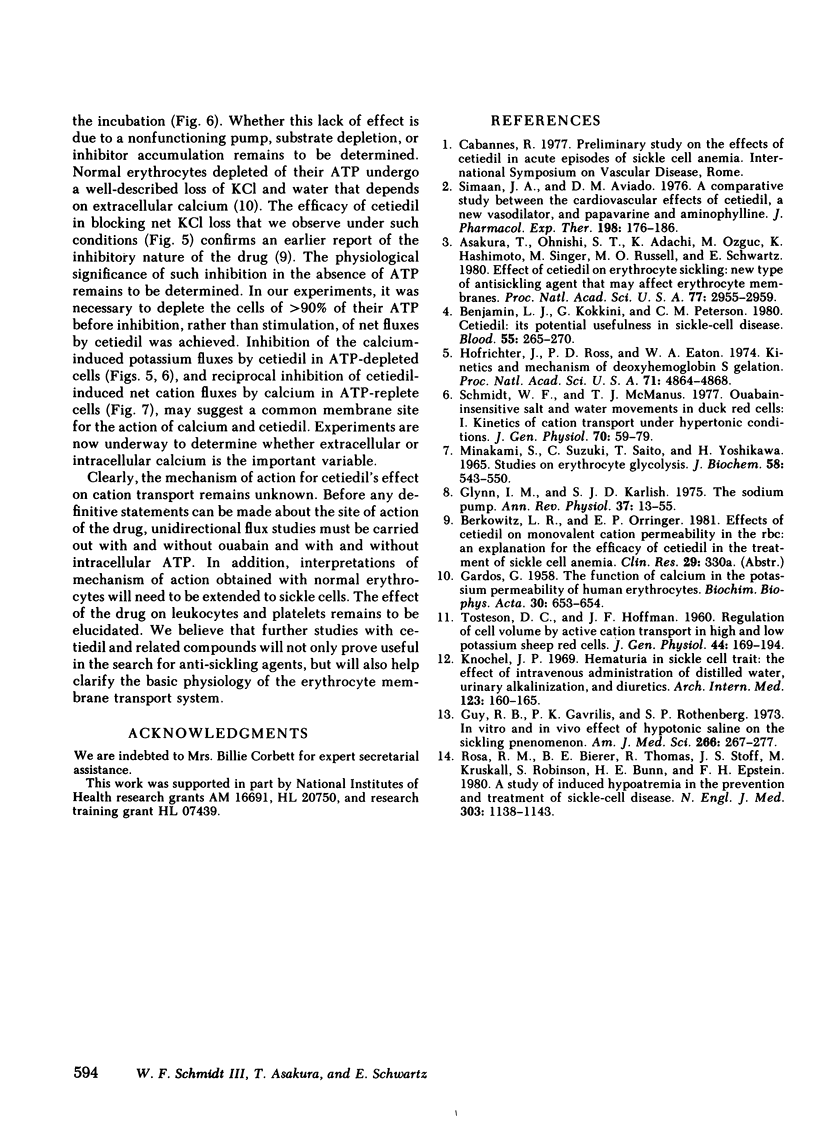
Selected References
These references are in PubMed. This may not be the complete list of references from this article.
- Asakura T., Ohnishi S. T., Adachi K., Ozguc M., Hashimoto K., Singer M., Russell M. O., Schwartz E. Effect of cetiedil on erythrocyte sickling: new type of antisickling agent that may affect erythrocyte membranes. Proc Natl Acad Sci U S A. 1980 May;77(5):2955–2959. doi: 10.1073/pnas.77.5.2955. [DOI] [PMC free article] [PubMed] [Google Scholar]
- Benjamin L. J., Kokkini G., Peterson C. M. Cetiedil: its potential usefulness in sickle cell disease. Blood. 1980 Feb;55(2):265–270. [PubMed] [Google Scholar]
- GARDOS G. The function of calcium in the potassium permeability of human erythrocytes. Biochim Biophys Acta. 1958 Dec;30(3):653–654. doi: 10.1016/0006-3002(58)90124-0. [DOI] [PubMed] [Google Scholar]
- Glynn I. M., Karlish S. J. The sodium pump. Annu Rev Physiol. 1975;37:13–55. doi: 10.1146/annurev.ph.37.030175.000305. [DOI] [PubMed] [Google Scholar]
- Guy R. B., Gavrilis P. K., Rothenberg S. P. In vitro and in vivo effect of hypotonic saline on the sickling phenomenon. Am J Med Sci. 1973 Oct;266(4):267–277. doi: 10.1097/00000441-197310000-00005. [DOI] [PubMed] [Google Scholar]
- Hofrichter J., Ross P. D., Eaton W. A. Kinetics and mechanism of deoxyhemoglobin S gelation: a new approach to understanding sickle cell disease. Proc Natl Acad Sci U S A. 1974 Dec;71(12):4864–4868. doi: 10.1073/pnas.71.12.4864. [DOI] [PMC free article] [PubMed] [Google Scholar]
- Knochel J. P. Hematuria in sickle cell trait: the effect of intravenous administration of distilled water, urinary alkalinization, and diuresis. Arch Intern Med. 1969 Feb;123(2):160–165. doi: 10.1001/archinte.123.2.160. [DOI] [PubMed] [Google Scholar]
- Minakami S., Suzuki C., Saito T., Yoshikawa H. Studies on erythrocyte glycolysis. I. Determination of the glycolytic intermediates in human erythrocytes. J Biochem. 1965 Dec;58(6):543–550. doi: 10.1093/oxfordjournals.jbchem.a128240. [DOI] [PubMed] [Google Scholar]
- Rosa R. M., Bierer B. E., Thomas R., Stoff J. S., Kruskall M., Robinson S., Bunn H. F., Epstein F. H. A study of induced hyponatremia in the prevention and treatment of sickle-cell crisis. N Engl J Med. 1980 Nov 13;303(20):1138–1143. doi: 10.1056/NEJM198011133032002. [DOI] [PubMed] [Google Scholar]
- Schmidt W. F., 3rd, McManus T. J. Ouabain-insensitive salt and water movements in duck red cells. I. Kinetics of cation transport under hypertonic conditions. J Gen Physiol. 1977 Jul;70(1):59–79. doi: 10.1085/jgp.70.1.59. [DOI] [PMC free article] [PubMed] [Google Scholar]
- Simaan J. A., Aviado D. M. A comparative study between the cardiovascular effects of cetiedil, a new vasodilator, and papaverine and aminophylline. J Pharmacol Exp Ther. 1976 Jul;198(1):176–186. [PubMed] [Google Scholar]
- TOSTESON D. C., HOFFMAN J. F. Regulation of cell volume by active cation transport in high and low potassium sheep red cells. J Gen Physiol. 1960 Sep;44:169–194. doi: 10.1085/jgp.44.1.169. [DOI] [PMC free article] [PubMed] [Google Scholar]


